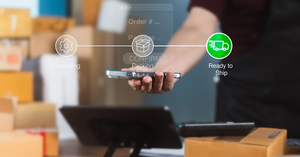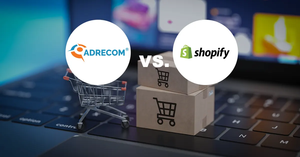While coupon usage make up a fundamental part-and-parcel of traditional
commerce, it is also true that e-tailers have much to gain from making use of
promotions and coupons. This post contains a summary of wise and unwise
discount practices and how coupons and promotions are used (and should be) in the
world of e-commerce.
Wise Practices
Broad Application
One of the best practices to adopt with regards to e-tailer
promotional coupons and discounts is to set up coupons so that they are
applicable to a relatively large number of items or item categories. By casting
a wider net you create more opportunities for customers to save on your
products, which raises the probability that they will spend money on them. If
you exclude a large number of products from the discounts available with a
coupon or set of coupons, you might also exclude customers.
The Choice: Dollar Amount or Percent Savings?
A good practice when establishing discounts is to fluctuate between
fixed dollar amount and percentage savings based on the price of the sale. For example,
it is better to use dollar amount discounts for relatively low purchases, such
as those less than $100, and to use percentage savings for purchases higher
than that. For example, a fixed coupon, such as one offering $25 off any
purchase lower than $100, creates a substantial saving and is generally
preferred by most customers. However, the same discount applied to more
expensive purchases generate less clicks and it is better to go with a discount
that increases along with total purchase price.
Free Shipping
It would be a slight misnomer to suggest that free shipping
is a perk when in fact (according to Forrester Research, a global research and
advisory firm) free product shipping will either make or break the deal.
According to a 2008 finding by the Conference Board, as high as %90 of
consumers say that free shipping would persuade them to make larger online
purchases.
Shifting between Automatic and Manual
It’s smart to make it as easy as possible for a customer to
utilize a coupon. While one way of doing this is to issue relatively short
coupon codes, no longer than 10 digits, but preferably shorter, another way is
to automate coupon code entry by installing a coupon button that automatically
enters and applies the coupon. Customers will sense that the company is trying
to make their shopping experience easier and more streamlined, and they would
be right. Customers also appreciate seeing their discount applied and displayed
on the screen once having clicked the coupon button.
Unwise Practices
Coupon Complexity
One of the worst practices to adopt with regards to e-tailer
promotional coupons and discounts is to set up coupons with unnecessarily long
coupon codes. Left to human error, which is common enough given that many
customers manually jot down coupon codes, a coupon is rendered unusable. Best
practices suggest to avoid using codes with strings of 15 or more digits, but
rather to limit yourself to no more than 10, and preferably less.
Greed
If you’ve found a goose that lays a golden egg, keep it
alive. In other words, avoid the temptation to raise the minimum sale amount
necessary in order to receive a discount, which just might kill the sale in the
first place. For example, if you find that most customers tend to purchase two
products for a $50 total, it might not be the wisest practice to raise the $10 discount
minimum purchase to $75. The additional $25 might not be worth the $10 savings.
This is largely a case-by-case principle and should be handled individually.
Ignoring New Customers
While it’s important to keep your fan base happy, it’s also
important to reach out to newcomers, who generally speaking have larger orders
than regular customers. New customers as well appreciate larger discounts as a
way of showing them that their business is appreciated. Offering higher
discounts for new customers is a good way of turning them into repeat
customers.
Navigation Confusion
One way to shortchange conversion rates is to design
a confusing navigational structure. For example, customers appreciate it when
clicking on a coupon link directs them to the landing page of the discounted
item, not to a more general category page. Even better than directing the
customer to the product page, create a coupon landing page for all the coupons
on the site.




